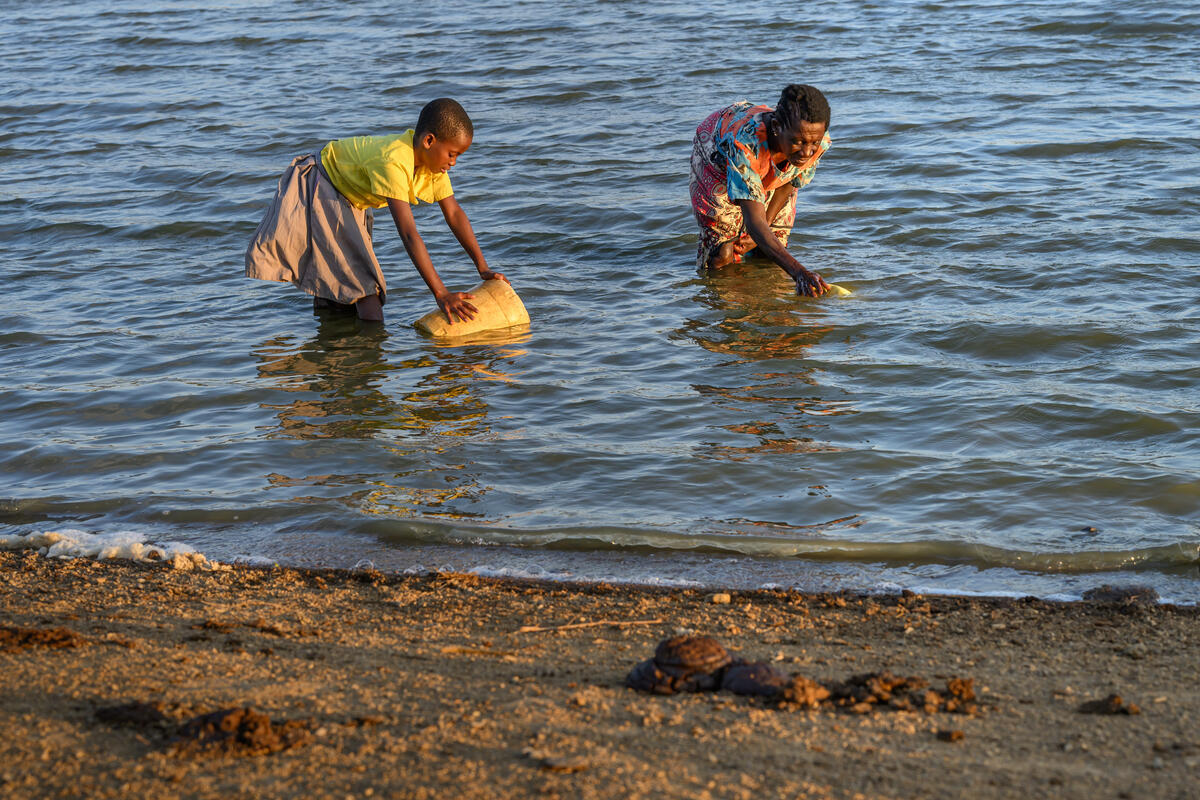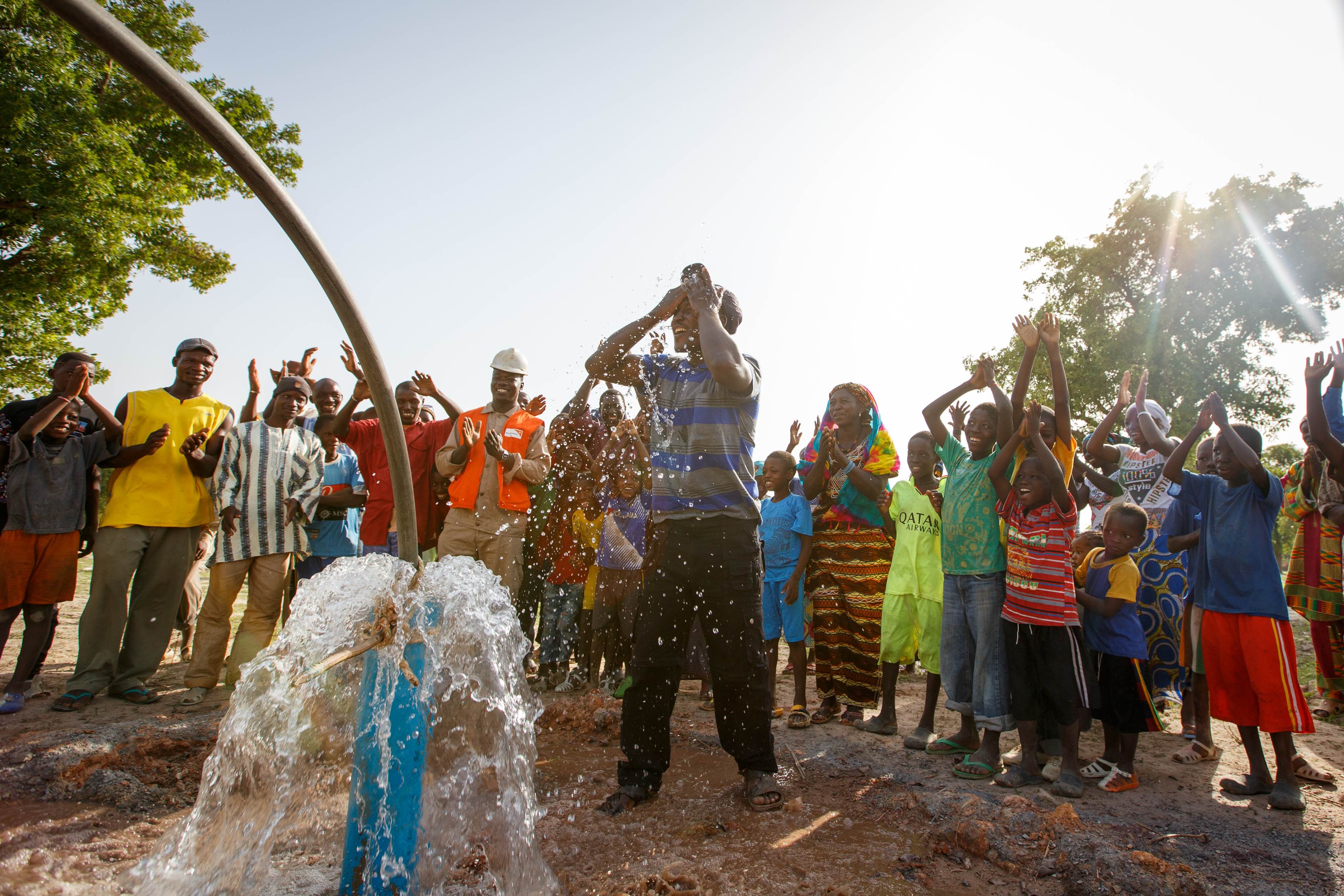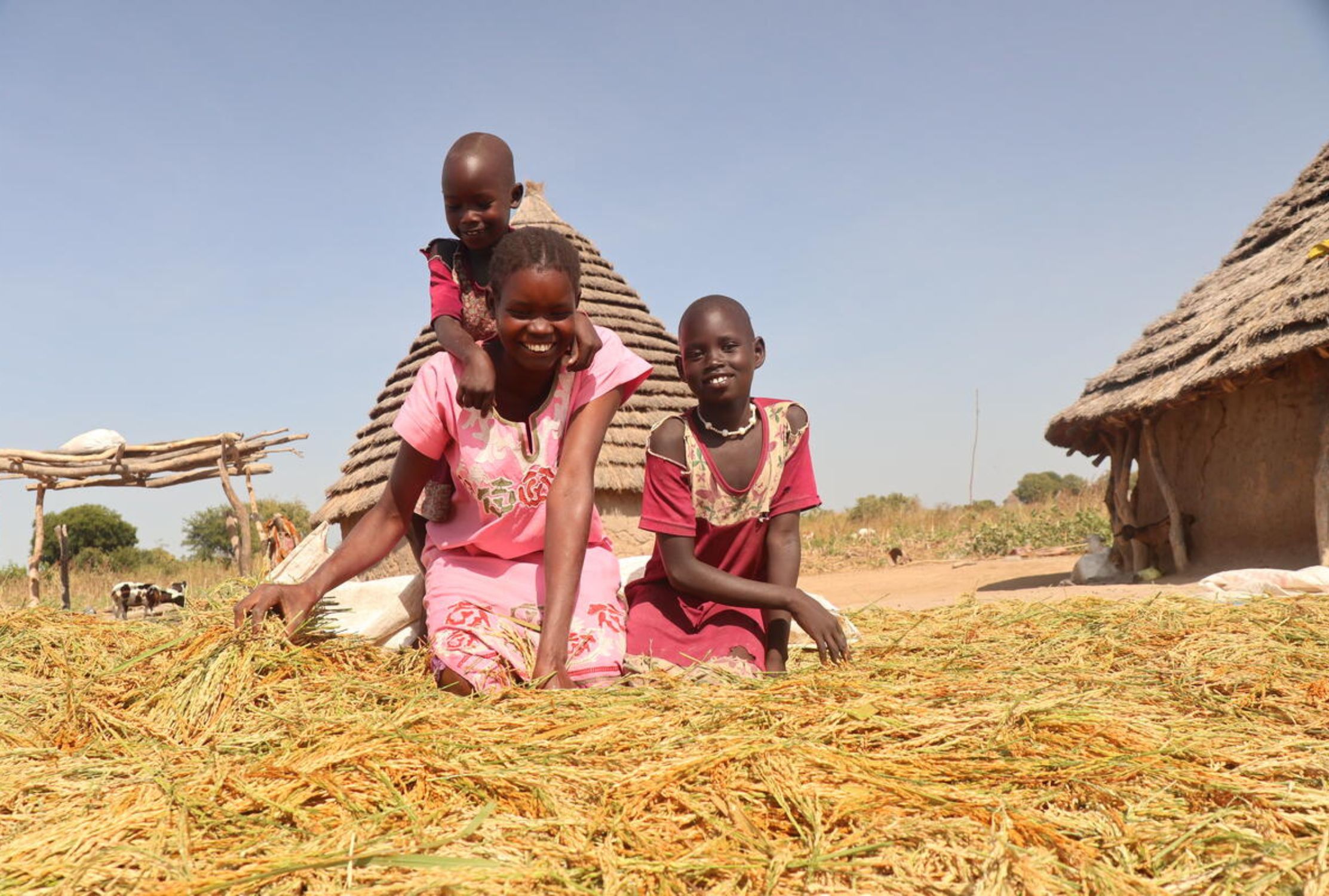
The long walk for water: Everlyne's story
A 10-year-old's resilient journey for survival
"I'm not happy when I miss school, it pains me. Whatever my fellow students are being taught, I am worried that when the exam comes, I might not be able to answer the question." - Everlyne, 10
A daily journey of hardship
In the dusty pathways of a remote village in Kenya, 10-year-old Everlyne and her grandmother Umazi begin their familiar journey as the afternoon sun beats down. Their destination, an hour away – a communal water source that will provide their family with this essential resource. This isn't an occasional two-hour round trip; it's a grueling daily routine that shapes their lives.
Umazi, a 65-year-old widow, makes this journey three times daily. Everlyne joins her grandmother after school and on her days off, carrying a five-litre container that feels increasingly heavy with each step.
"When I'm carrying the water, I normally feel headachy, and my body feels tired," Everlyne explains. The pain doesn't subside quickly. "I have to sit for two hours until the pain goes away."
According to a UNICEF estimate, women and girls around the world spend a combined 200 million hours each day collecting water – time that could be used for education, work, or leisure. For Everlyne, this statistic is not just a number – it's her reality.
According to a UNICEF estimate, women and girls around the world spend a combined 200 million hours each day collecting water
Education interrupted

The consequences of this water scarcity extend far beyond physical discomfort. After evening water collection trips, Everlyne often falls asleep from sheer exhaustion, making it difficult to rise for school the following morning.
According to United Nations, children around the world miss 443 million school days each year due to water-related illnesses.
For Everlyne, the water she works so hard to collect often becomes the source of her absence. "As we drink that water, there's a feeling of a stinging effect in the stomach and at times diarrhoea," she explains. The water source, shared with local livestock and wildlife, is contaminated and unsafe for drinking.
"I'm not happy when I miss school, it pains me," Everlyne continues. "Whatever my fellow students are being taught, I am worried that when the exam comes, I might not be able to answer the question."

Dangers along the path
The journey for water carries risks beyond contamination. One afternoon, Everlyne and Umazi heard the unmistakable sound of elephants nearby.
"We were scared and trembling. But we were trembling as we were running," Umazi recalls with a touch of humour that contradicts the real danger they faced.
"We had to leave the jerry cans behind and run," adds Everlyne. "The jerry cans were too heavy."
When they returned later, they discovered their container had been damaged beyond repair, and the precious water they had collected was gone.
Yet wildlife isn't the most dangerous threat they face. Everlyne solemnly recounts another incident: "we met guys with knives on the road. We felt like they wanted to molest or take advantage of us, so we had to run away in the bush."
Studies show that women and girls face heightened risk of gender-based violence when collecting water.
Seeds of change
Despite these challenges, change is gradually taking root. World Vision has constructed a large rainwater collection tank at the Primary School Everlyne attends. During the extended dry season, World Vision ensures the tank remains filled with clean water via tanker trucks until the rainy season returns.

This immediate intervention is complemented by more sustainable solutions. Through the local clinic and in partnership with Procter & Gamble, World Vision distributes P&G Purifier of Water packets to community members. Each packet can treat 10 litres of contaminated water, making it safe to drink in just 30 minutes – a life-changing solution for families like Everlyne's.
Looking forward
World Vision's work goes beyond temporary solutions, working towards sustainable, long-term change. It includes a treatment plant for the local earthen dam and a piping system to bring clean water directly to the community.
Stories like Everlyne's remind us why this year's World Water Day theme, "Glacier Preservation," resonates so deeply. While Everlyne’s community faces water crisis due to local conditions, communities around the world are experiencing a change in water patterns as distant glaciers melt. These changes affect rainfall patterns and water availability across continents, creating a chain reaction that affects even remote villages such as the earthen dams that communities like Everlyne’s depend on. This reminds us that water poverty requires global attention and local solutions.
For Everlyne, the promise of clean, accessible water means more than simply quenching thirst. It represents the possibility of regular school attendance, freedom from waterborne illness, and relief from the daily burden she carries – both physically and emotionally.
Today, one of the most powerful ways to help children like Everlyne is by sponsoring a child. Your sponsorship provides access to clean water, education, healthcare, and more. And beyond changing one child’s life, you’re helping their entire community thrive.
Start your journey of sponsorship today




